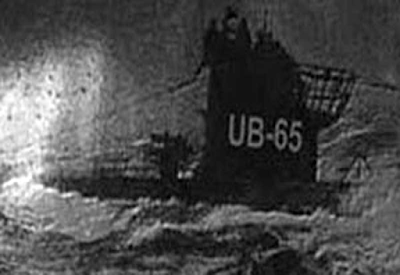This happened at dawn on July 10, 1918. One of the patrol American submarines sailed from the Atlantic's very surface, not far from Cape Claire.The dawn periscope cut the waves and turned slightly in all directions, which indicated that someone was observing the open sea, which was still shrouded in mist.
It was the officer on duty, who a few moments later began to strain his gaze because it seemed to him that some kind of ship was floating about half a mile away. He informed the commander, so together they estimated that it was most likely a submarine, whose crew wanted to breathe in the fresh morning air. They could already make out the details quite clearly-the lid on the command tower was raised, and a man was walking on the bow next to the cannon as if on guard or going out for a walk. Lowering the periscope, the commander ordered an alert and to prepare the bow torpedoes. The submarine then surfaced. At that time, the technique of submarine shooting had not yet been mastered, so submarine skirmishes also took place on the surface, and on this occasion, it was necessary to determine whether it was an enemy submarine.
The First World War was still going on. The United States of America also went up against Germany, so the conflicts in the Atlantic became more and more intense. As soon as he lifted the lid and went out onto the command tower, the commander began to observe the unknown submarine through binoculars. That man was still walking on the bow next to the cannon. He was wearing a short leather coat, the kind worn by German submariners, so there was no longer any doubt that he was an enemy officer. The American submarine took up combat positions and expected further commands, while the commander was surprised that the Germans did not notice them, because in the meantime, they approached them a few hundred meters away. Just when he wanted to call them for identification, something happened that they least expected-a terrible explosion simply blew up an enemy submarine. A huge cloud of smoke and water vapor emerged from the current torch, and debris was scattered all around. The explosion occurred in the submarine itself, probably due to someone's negligence, because no torpedoes or grenades were fired from the American side. If they had been closer, they could have been killed, but this way they only felt the air strike and shook a little from the strength of the detonation.It was not until August 1, 1918, that the German press announced that the U-65 submarine had disappeared and was considered lost, along with a crew of 34 officers and sailors. After the First World War, this case was especially dealt with by the American and British navies. The reason was the discovery of a strictly confidential Z/U-65 file in the secret archives of the German admiralty. The preserved documents are actually a horrible story about that submarine, which seemed destined to bring misfortune to its crew and was hinted at from the very beginning of construction. One worker died and another was seriously injured and disabled. A fire broke out in the future engine room when it was half built. Some claimed that the room inexplicably began to fill with smoke, and the three technicians could not get out because the door was stuck and they suffocated. On a test voyage in October 1916, an engineer who performed inspection work on that submarine committed suicide. He jumped from the deck into the sea and immediately sank. When the submarine dived after that, it landed on the seabed, and all the efforts of the crew to bring it back to the surface remained in vain. After 12 o'clock, she suddenly shook and, regardless of the fact that no one did anything, she rushed and emerged on her own. A few days later, while loading ammunition, a torpedo exploded under unexplained circumstances. Another deck officer and five sailors were killed.
The submarine was significantly damaged and towed to the shipyard for repair. Then the terrified non-commissioned officer, Karl Josef Pedersen, reported to the commander and told the visibly excited story of the horrible encounter: "At the submarine torpedo warehouse, I saw another deck officer killed. He was in a short leather coat, an officer's, as he was the day he was killed. Due to the cramped space, he walked past me and touched me with his elbow. I saw him quite clearly. He looked real. I felt when he touched me. Nobody in the admiralty believed the story of that non-commissioned officer, who deserted that same evening. But, a few days later, almost the entire crew of the submarine was faced with such statements. She sailed the English channel and surfaced in the evening. At that time, several sailors, officers and non-commissioned officers, saw a man in the bow, who they recognized as a dead friend. After cruising the Atlantic, where she sank several Allied ships in the spring of 1917, the submarine returned to its home shipyard. It surfaced just as English planes bombed it. Unaware of what was going on outside, the commander lifted the lid of the command tower and was fatally shot in the head, so the Admiralty launched an investigation into all these strange events. Nothing unusual was discovered. The submarine then sailed with a new commander and crew. But as he jumped through the command tower, gunner Erich Eberhard shouted frantically: "I saw him next to the bow torpedo tube!".











